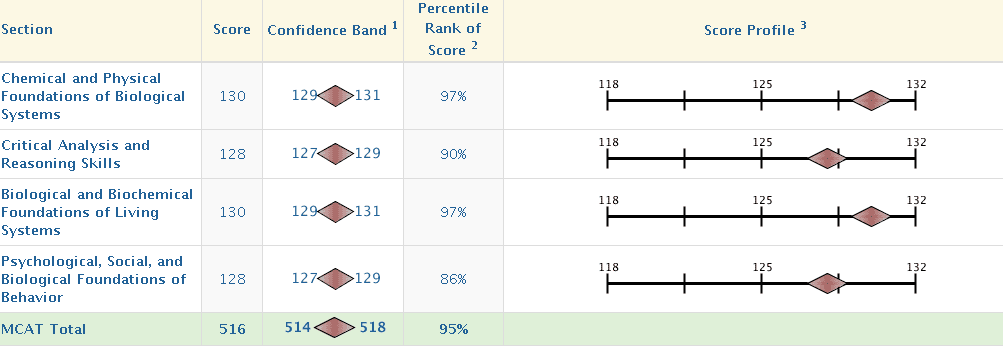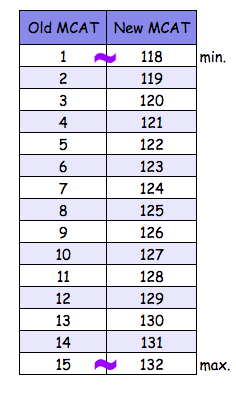In Step 1 of this guide you learned what the MCAT was all about from timeline to expectations. Let's continue.
Stumbled onto the Ultimate MCAT Prep Guide? Click to Start at the Beginning.

One of my favorite quotes is:
 Your dream is to become a doctor, but what’s your plan?
Your dream is to become a doctor, but what’s your plan?
You know you need to take the MCAT to get into medical school but
HOW do you get the process started?
WHERE do you begin?
HOW do you start to study?
HOW do you know if you’re making progress?
HOW do you know when you’re done?
I know you have a lot of questions. After all, you ARE reading this guide. And this is the best place to start!
The first thing you need to do before beginning to study for the MCAT is to set your personal goals (the focus of this chapter).
Second, you must have quantitative methods ready to measure your progress as you move through your study plans. This is discussed further in Step 5 Making the Most of Your MCAT Study Time

A student recently emailed me unsure if he would be ready for his scheduled MCAT date. I asked him his target score. He said, “I don’t know, maybe a 500?”
A few days later he replied that he wants a 528!

He went from aiming for a non-competitive goal to shooting for the highest score!
Setting your MCAT goal is a twofold process:
It has to be both realistic, AND match up with the specific requirements of your dream schools.
If you are an average student, chances are, no amount of studying will help you reach a perfect score of 528.
Then again, why on Earth would you WANT to exhaust yourself for a score that is way higher than what you really need? Perfect is only achieved by less than 1% of MCAT test takers (According to the AAMC Percentile Ranks).
Does this mean you need to aim for some arbitrary number in the middle?
Not quite!
You must be strategic in choosing your target MCAT score. There’s a very specific process to follow. This is where we will spend most of our time in this chapter.
 Without a specific goal to guide you, how do you know which advice to follow? You may find yourself following any and all advice but arriving nowhere at all, left with a mess and frustration. Completely overwhelmed!
Without a specific goal to guide you, how do you know which advice to follow? You may find yourself following any and all advice but arriving nowhere at all, left with a mess and frustration. Completely overwhelmed!
HOW do you get the process started? WHERE do you begin?
The absolute first thing I recommend is taking a full-length practice test under realistic testing conditions.
Not only will this give you a feel for what to expect on the exam, you’ll also get a baseline score to help you establish a starting point.
This will help you determine just how hard you need to work over the next few months to bring up your score.
Read more: The best time time to take your first MCAT practice test.

The first question you need to answer: where you want to go to medical school?
Or perhaps: Where do you DREAM of going to medical school?
Don't be afraid to dream big.
While you don’t have to commit to a school anytime soon, it certainly helps to have that dream school in mind.
This will give you that school’s statistics to set as your target!
As of 2015, there are one hundred and forty-five M.D. (allopathic) medical schools and thirty-three D.O. (osteopathic) medical schools (AACOM) in the United States.
There are seventeen medical schools in Canada (Ivy Global). There are many more outside the U.S., such as in the Caribbean Islands, that allow you to study there but practice in the States.
More about this on the AAMC website.
When choosing your target/dream school you must carefully research the school to make an informed decision.
Medical school will be your second home for at least four years, so the factors to consider are multi-faceted.
Make sure you are a good fit by knowing the following about the school:
- Mission
- Curriculum
- Teaching hospitals
- Style of medicine or the teaching style emphasized by the school
- Personal relationships or distance from family/friends
- Weather/climate
- Cost
- Status and history of the school – new medical school (not to be underestimated) versus older, established school (influence/reputation)
- Match results for residencies (US News)
(Without opening a can of worms, I’d like to say, while you can get your degree outside of the US/Canada, keep in mind that there are upsides and downsides to this.
If you’re considering a non US/CA school: please, please, please, do your research on everything from expenses, tuition fees, high drop off rates, low graduation rates, residency rates, and more before making a commitment.
And PLEASE don’t make this decision simply because you’re afraid of the MCAT.)
 Once you’ve determined that a school works for your needs/desires, research their numerical requirements:
Once you’ve determined that a school works for your needs/desires, research their numerical requirements:
GPA’s and MCAT scores.
Track all this in your Companion Workbook.
To collect numerical requirements, use the Medical School Admissions Requirements (MSAR) for MD schools. There is no such database for DO schools, but AACOMAS publishes a number of reports for gathering information.
Sometimes I find non-affliated websites (while not as reputable) helpful as a starting point and even just consulting Google. <– But always remember to come back and compare the info you find to the AMCAS and AACOMAS official reports, along with the school’s official website reports.
Is your GPA close to your dream school’s average?
When looking at numbers, I always look for the average.
While average is obtained by combining the low and high GPAs of accepted students, you can’t possibly know why the low GPA students got in.
Never look at the lowest requirements and assume you can just sneak in there.
Perhaps those accepted low-score students had connections at the school, or something extraordinary in their application; perhaps they were part of a bridge program that guaranteed them a spot for meeting a minimum GPA/MCAT requirement.
And because you don’t know, you can’t hope for a miracle.
Bottom line: if your GPA is close to the average requirements, then you can consider that school within reach.
For example, if you have a 2.9 GPA and your dream school has an average accepted GPA of 3.67, chances are, that’s not a good fit. Can you still apply there?
Absolutely! But you better have nothing less than a stellar application. You may still face rejection.
If the school in question is your state medical school and they have an average accepted GPA of 3.1, you can consider this school a better fit for you.
 I recommend identifying a minimum of six target schools when starting MCAT prep: Keep track of them in your Companion Workbook.
I recommend identifying a minimum of six target schools when starting MCAT prep: Keep track of them in your Companion Workbook.
- Two schools at your level as your “shoo-in” schools (you know you can reach their average requirements)
- Two schools slightly above your level as your “reach for it” schools
- Two schools slightly below your level as your “fallback” schools
You’ll hopefully apply to more than six down the line. This is just a starting point for planning and preparation.
Now that you have a few realistic dream schools to target, let’s figure out your target MCAT score.
Once again turn to MSAR, or Google and research the average accepted MCAT score for the past three years at each school.
Take this score, add 2-3 buffer points, and voila, you have a target MCAT score!
- If you can score well above the target, then you’ll stand out among applicants applying with the average score.
- No matter how well you prepare you’ll still feel nervous on test day.
What if nerves cost you a few points? Can you afford to drop below the required score?
Adding buffer points ensures that even if you panic, you’re still coming out with an average and therefore competitive score.
If one of your schools have a significantly higher score consider the higher number a ‘built in' buffer.
For example, if your 6 schools have the following averages: 509, 506, 508, 508, 512, 510 I'd consider a target score of 512 which has a built in buffer for the 506-510 range.
UNLESS the 512 schools IS your dream school. In that case I'd set the target at 514.
Why just 2-3 buffer points?
Raising your MCAT score becomes exponentially more difficult with each additional point. Adding a 5-point buffer is not only unrealistic, but also unnecessary.
Here are some helpful estimates below. These are based ONLY on my personal observations. As both a tutor and online MCAT advisor I notice trends among my students and subscribers in general.
The average student starting under 490 is able to bring up his score by about 20 points with average studying.
The average student starting near 500 is able to bring up her score by about 15 points with average studying.
The greater the difference between your starting score and your target score, the more time you’ll need.
While these numbers are not formally reported statistics, they are what I have come to expect over years of analyzing student data and improvement.
Yes, outliers exist: I’ve seen students increase by just a few points while others shoot up by a ridiculous amount.
However, 2-3 buffer points has held true overall and proven most helpful.
What You Need to Know About the New MCAT Scoring System

When choosing a target, it’s important to take into account the MCAT score range for this year. This can help you set more realistic goals.
The old MCAT had a very simple scoring system–three sections scored on a scale of 1-15. If you managed a 10 per section you got a 30. Very simple.
The new MCAT (implemented in April 2015) is not so simple at first glance!
Your MCAT score will be reported with the following information per section and total overall:
- Score totals
- A confidence band
- A percentile rank of your score
- And a visual score profile


Score Totals:
There are four sections scored from a range of 118 to 132.
Your score is the total of what you earn on each section. In the new MCAT it is more difficult to wrap your brain around.
That is unless you break it down: if 118 is a 1, then 132 is actually just a 15.
In both scoring styles, there is still a 15-point scale where the median–8–is a 124, close to the average score. (125 = average x 4 = 500).
Confidence Band:
The results will be plotted on a graph with a confidence band reminding medical schools how you scored in relation to other students who took the test on the same day.
Percentile Rank:
MCAT scores are graded as a percentile.
Your numerical score will be ranked against all others testing in that period.
Important!: Average numerical MCAT score does NOT mean average accepted score!
A 125 per section or 500 overall score is average when compared to all students testing.
With over 60,000 students testing each year, and just over 20,000 matriculates (students starting medical school each year) can you really afford a just average MCAT score?
You must aim to score well above average on the MCAT for your target school to be considered as a potential candidate.
The AAMC publishes a very helpful scoring chart to relate scores to the percentiles. See the most current one on their website.
To quickly grasp the idea, here are a couple of examples:
If you receive a 500 = 53 percentile, you’ve outscored 52% of test takers.
Maybe you receive a 509 = 82 percentile.
This means you’re in the top 18% of testers. This means you’ve outscored 81% of all students who took this test.
Receiving a 514 = 92 percentile puts you in the top 9% of all test takers.
To relate this information back to targets, why aim for a 518 (97 percentile) when your school is looking for top 10%?
518 is quite difficult to achieve because you have to outscore 96% of all students who take the MCAT! Instead, including your 2-3 point buffer, maybe aim for a 515.
You will find stories online about people who score above the 520’s with just eight weeks of studying.
Don’t believe everything you read online and don’t compare your performance to their success.
First of all, you don’t know all of the parameters in each person's case.
For example, what was his starting point?
Did he start studying after a 510 on his first full-length MCAT?
What was his academic background and science knowledge/exposure prior to starting MCAT prep?
Did he face all the challenges and obstacles that you have in YOUR life?
Secondly, and sadly, there are dishonest people out there who use the Internet to lie about their scores in the hopes of scaring the competition.
This is just plain evil! You don’t want to gamble in any way with your MCAT score since it is a game changer in the world of medical school admissions.
A three-month study plan may work for some people;
It may even work for you, but you need to establish a baseline and trend before you limit yourself to such a short amount of prep time.
Haven’t taken your first full-length MCAT yet? Read this article The Best Time to Take Your 1st Full Length Practice Test and block out a day ASAP to take it.

If there is a specific school you want to attend, before you do anything else, go to the school’s website

and find the most awe-inspiring image of its campus or medical school building.
If the name of the school is not in the image, use Paint or Photoshop to put it on there IN BIG LETTERS. Set this as your computer AND phone screensavers.
Or, create a “doctor” motivation collage! (Personally, I like the idea of a specific school to make your dream more real.)
Then print out the absolute largest poster you can afford. Hang it in your room so that it’s the first thing you see when you open your eyes in the morning!
This poster helps create an inspiring and inviting study space and serves as a goal reminder when you feel down and unmotivated.
One of my students covered her Study Journal with these medical stickers (Amazon) to serve as a daily reminder.

These little setting enhancers will remind you WHY you’re doing this and WHAT this dream means to you.
Picture this:
“It’s Saturday morning and I just want to sleep in, but wait, there’s a picture of my dream medical school…” *Fire inside* “I will be the next student accepted into [insert dream school name] so I have to get up and go study!”
Setting your target score is just the beginning.
Studying with JUST a score in mind won’t help you reach that number either though!
Now that you understand your goals and what is expected of you, let’s dive in.
What resources should you use?
How should you break up your studying?
How do you build up your content foundation?
Do you know when & how to use your Full-Length practice exams?
This and more in the next chapter. → Take me to Step 3
Click to return to the Ultimate MCAT Prep Guide home page
And if you haven't already…
Be sure to download the Companion Workbook to help you keep track of what you learned in this chapter. Focus on tactics, steps, specifics, and of course your biggest takeaway from this chapter.







